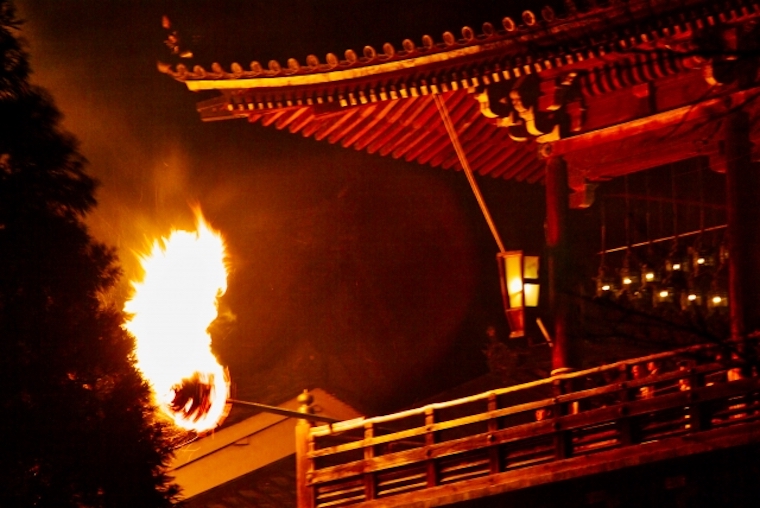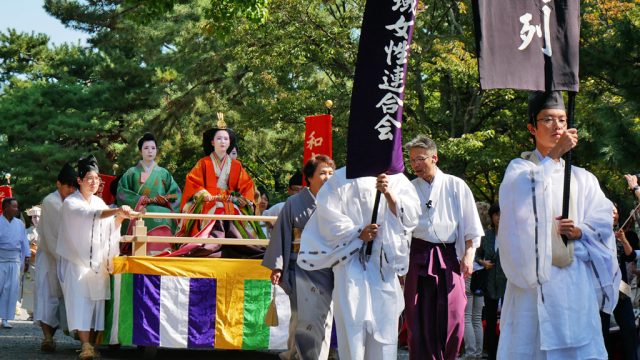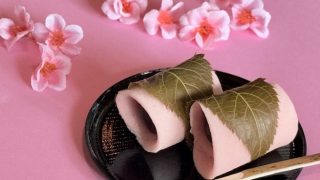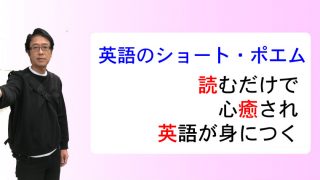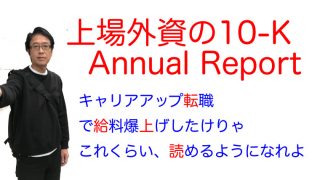In the heart of Nara, Japan, as winter transitions to spring, one of Japan’s oldest and most spectacular Buddhist ceremonies takes place: the Omizutori (お水取り), or “Water-Drawing” ritual at Todaiji Temple’s Nigatsu-do Hall.
This ancient ceremony, dating back over 1,250 years, combines sacred ritual, mesmerizing fire displays, and profound spiritual significance to create an unforgettable cultural experience.
奈良の中心部で、冬から春への移り変わりの時期に、日本最古の壮大な仏教儀式の一つが行われます。
それが東大寺の二月堂で行われる「お水取り」、または「水汲み」の儀式です。1,250年以上の歴史を持つこの古代の儀式は、神聖な儀式、魅惑的な火の表示、
そして深い精神的意義を組み合わせて、忘れられない文化体験を生み出します。
本記事では、東大寺二月堂お水取りについて外国人に紹介するときの解説を紹介しています。
目次
What is Omizutori? (お水取りとは?)
Omizutori is the highlight of a two-week Buddhist observance called Shuni-e (修二会), which takes place annually from March 1st to 14th. The name “Omizutori” literally means “water drawing” and refers to the central ritual where sacred water is drawn from a well that is said to flow only once a year.
お水取りは、毎年3月1日から14日まで行われる「修二会」と呼ばれる2週間の仏教行事の中でも最も重要な儀式です。「お水取り」という名前は文字通り「水を汲む」という意味で、年に一度だけ水が湧き出るとされる井戸から神聖な水を汲み上げる中心的な儀式を指します。
This ceremony is not merely a religious ritual but a living tradition that has continued uninterrupted since the year 752 CE, making it one of the oldest continuously practiced Buddhist ceremonies in Japan. The ritual is performed by monks of the Hosso school of Buddhism at Todaiji’s Nigatsu-do Hall (二月堂), which sits on the hillside overlooking the main temple grounds.
この儀式は単なる宗教的な儀式ではなく、西暦752年から途切れることなく続いている生きた伝統であり、日本で最古の連続して行われている仏教儀式の一つです。この儀式は、東大寺の二月堂で法相宗の僧侶たちによって行われます。二月堂は本堂の境内を見下ろす丘の上に位置しています。
The Fire Ceremony: Otaimatsu (お松明)
For visitors, the most visually striking element of Omizutori is the Otaimatsu (お松明) or “fire ceremony.” Each night during the Shuni-e period, giant torches weighing up to 80 pounds and measuring up to 26 feet in length are lit and carried to the balcony of Nigatsu-do Hall.
訪問者にとって、お水取りの中で最も視覚的に印象的な要素は「お松明」または「火の儀式」です。修二会の期間中、毎晩、最大80ポンド(約36kg)の重さと最大26フィート(約8m)の長さの巨大な松明が点火され、二月堂の舞台へと運ばれます。
As monks wave these massive torches over the balcony, showers of burning embers rain down on the spectators below. It’s believed that these sacred sparks have the power to protect against evil and bring good fortune. The larger the spark that lands on you, the greater the blessing you’ll receive.
僧侶たちがこれらの巨大な松明を舞台から振り下ろすと、燃える火の粉が下の観客に降り注ぎます。これらの神聖な火の粉は邪悪なものから守り、幸運をもたらす力があると信じられています。あなたの上に落ちる火の粉が大きいほど、受ける祝福も大きいとされています。
The scale of this spectacle increases each night, culminating on March 12th when the largest number of torches (11 in total) are displayed, creating the most dramatic fire show of the entire ceremony.
この壮観さは毎晩増していき、3月12日には最大数の松明(合計11本)が披露され、儀式全体で最も劇的な火の祭典となります。
The Water-Drawing Ritual (水汲みの儀式)
While the fire ceremony draws the crowds, the actual water-drawing ritual—which gives the ceremony its name—takes place in the early morning hours of March 13th. At precisely 2:00 AM, the monks descend to a sacred well called Wakasa-i (若狭井) to draw water that is said to flow from the underground only once a year.
火の儀式は群衆を集めますが、儀式の名前の由来となる実際の水汲みの儀式は、3月13日の早朝に行われます。午前2時ちょうどに、僧侶たちは「若狭井」と呼ばれる神聖な井戸に降りて、年に一度だけ地下から湧き出るとされる水を汲み上げます。
This water, believed to have healing properties, is offered to the principal image of the temple, Kannon Bodhisattva (the Buddhist deity of mercy), and later distributed to visitors. The water is said to be a gift from the dragon god who lives in the well and is considered a sacred elixir.
癒しの効能があるとされるこの水は、寺院の本尊である観音菩薩(仏教の慈悲の神)に奉納され、後に参拝者にも配られます。この水は井戸に住む龍神からの贈り物とされ、神聖な霊薬と考えられています。
Historical and Cultural Significance (歴史的・文化的意義)
The Omizutori ceremony began in 752 CE as a way to repent for sins and pray for peace and abundant harvests. It was established by a priest named Jitchu, who was inspired by a vision of the eleven-faced Kannon Bodhisattva.
お水取りの儀式は、罪を悔い改め、平和と豊作を祈るために752年に始まりました。この儀式は実忠という名の僧侶によって設立され、彼は十一面観音菩薩のビジョンにインスピレーションを受けました。
Throughout its long history, the ceremony has survived fires, wars, and natural disasters. Even during World War II, when many cultural practices were suspended, Omizutori continued, albeit in a simplified form. This unbroken tradition is a testament to the ceremony’s profound cultural and spiritual importance to the Japanese people.
その長い歴史を通じて、この儀式は火災、戦争、自然災害を乗り越えてきました。多くの文化的慣行が中断された第二次世界大戦中でさえ、お水取りは簡略化された形ではありましたが継続されました。この途切れることのない伝統は、日本人にとってのこの儀式の深い文化的・精神的重要性を証明しています。
Experiencing Omizutori as a Visitor (訪問者としてのお水取り体験)
For foreign visitors, Omizutori offers a rare glimpse into Japan’s living Buddhist traditions. The ceremony is open to the public, though visitors should be prepared for large crowds, especially on March 12th when the fire ceremony is at its peak.
外国人観光客にとって、お水取りは日本の生きた仏教の伝統を垣間見る貴重な機会です。この儀式は一般公開されていますが、特に火の儀式が最も盛んな3月12日には大勢の人出が予想されるので、訪問者はそれに備えるべきです。
To fully appreciate the ceremony, arrive early to secure a good viewing spot. The fire ceremony begins around 7:00 PM and lasts about 20 minutes. Dress warmly, as March evenings in Nara can be chilly, and wear clothes you don’t mind getting dirty—the falling embers can leave burn marks on clothing.
儀式を十分に楽しむためには、良い観覧スポットを確保するために早めに到着することをお勧めします。火の儀式は午後7時頃に始まり、約20分間続きます。奈良の3月の夜は肌寒いことがあるので、暖かい服装をし、汚れても気にならない服を着ることをお勧めします—落ちる火の粉は衣服に焦げ跡を残すことがあります。
While photography is allowed, be respectful of the religious nature of the event. Remember that this is not merely a tourist attraction but a deeply significant religious ceremony with over a millennium of history.
写真撮影は許可されていますが、イベントの宗教的性質に敬意を払ってください。これは単なる観光スポットではなく、千年以上の歴史を持つ深い意味を持つ宗教的儀式であることを忘れないでください。
Conclusion (結論)
Todaiji’s Omizutori ceremony represents the perfect blend of spectacular visual display and profound spiritual tradition. As one of Japan’s oldest continuously practiced Buddhist rituals, it offers visitors a unique opportunity to connect with Japanese culture at its most authentic.
東大寺のお水取り儀式は、壮大な視覚的表現と深い精神的伝統の完璧な融合を表しています。日本最古の連続して行われている仏教儀式の一つとして、訪問者に最も本物の日本文化とつながる独特の機会を提供します。
Whether you’re drawn by the breathtaking fire displays, the ancient religious traditions, or simply the chance to experience a ceremony that has remained largely unchanged for over 1,250 years, Omizutori is a must-see for anyone visiting Japan in early March.
息を呑むような火の表示、古代の宗教的伝統、あるいは単に1,250年以上ほとんど変わらずに続いてきた儀式を体験する機会に惹かれるのであれ、お水取りは3月初旬に日本を訪れる人なら誰もが見るべき必見の儀式です。
Visitor Information (訪問者情報):
- Location: Nigatsu-do Hall, Todaiji Temple, Nara, Japan
- 場所: 日本、奈良、東大寺二月堂
- Dates: March 1-14 annually (Fire ceremony every night, most spectacular on March 12)
- 日程: 毎年3月1日〜14日(火の儀式は毎晩、3月12日が最も壮観)
- Time: Fire ceremony starts around 7:00 PM
- 時間: 火の儀式は午後7時頃開始
- Admission: Free (temple grounds entrance fee may apply during daytime)
- 入場料: 無料(日中は寺院境内入場料がかかる場合あり)
- Access: 30-minute walk from Kintetsu Nara Station or JR Nara Station
- アクセス: 近鉄奈良駅またはJR奈良駅から徒歩30分
外資系企業への英語面接サポート・サービスで不安を解消しましょう!
stephenpong.com では、おひとりおひとりに合わせて
英語面接のサポートをレジュメの作成段階からご指導致します
まずは、お問い合わせください
自分で用意した英文レジュメはこれでいいのかな?
英語面接の質問とその答え方はどう準備したらいいの?
英語の面接に不安を感じる、模擬面接で練習したい?!
これらのお悩みをすべて解決します!
お気楽に下記フォームからご相談ください!
人生を動かしましょう!
ごく稀に、返信メールがお客様の迷惑フォルダに紛れ込んでいる場合がありますのでご注意ください。
